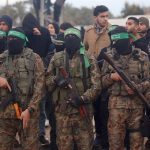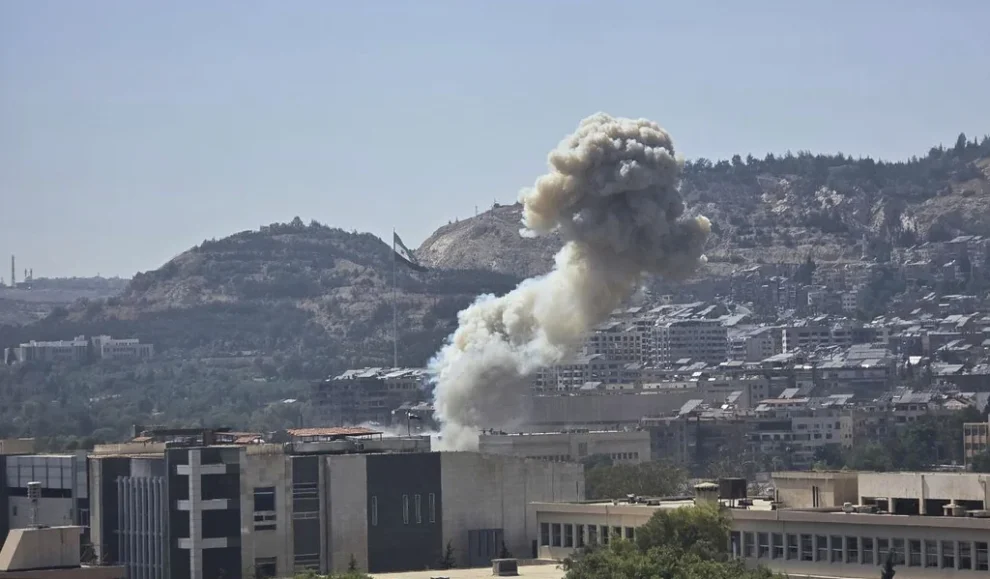Israel expanded airstrikes against Damascus on Wednesday after a fragile ceasefire in southern Syria collapsed.
Though announced by Damascus on Tuesday, the ceasefire between the Druze and government forces doesn’t appear to have ever truly taken effect, with heavy fighting continuing all throughout the previous day. Druze militias, backed by increasing Israeli airstrikes, counterattacked and pushed government forces out of the Druze stronghold of Suwayda. Israel Defense Forces airstrikes escalated on Wednesday, devastating government buildings in Damascus.
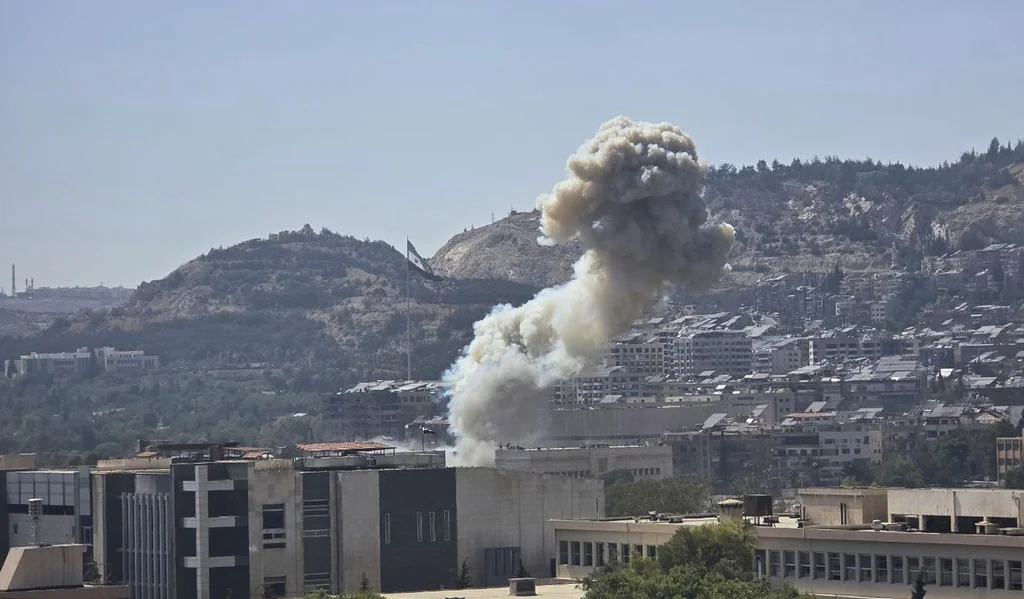
In a statement, the IDF confirmed that it hit the entrance of the Syrian Ministry of Defense headquarters in Damascus. A news broadcast captured the moment the building was hit.
Israel followed up the strikes with a second, much larger round shortly after, hitting Ahmed al-Sharaa’s Presidential Palace and completely destroying the MoD headquarters.
It also expanded its tactical strikes against regime convoys.
“Over the past day, the IDF has struck and continues to strike tanks, rocket launchers, weapons, and pickup trucks loaded with heavy machine guns on their way to the As Suwayda area in southern Syria,” it said, adding that it struck certain roads to block reinforcements from accessing the area.
“The IDF continues to monitor developments and the regime’s actions against Druze civilians in southern Syria. In accordance with directives from the political echelon, the IDF is striking in the area and remains prepared for various scenarios,” it added.
On Tuesday, reports circulated that the United States had intervened and demanded that Israel cease its attacks against regime forces, to which Israel agreed. Those reports appear to be either false or Israel has changed its position.
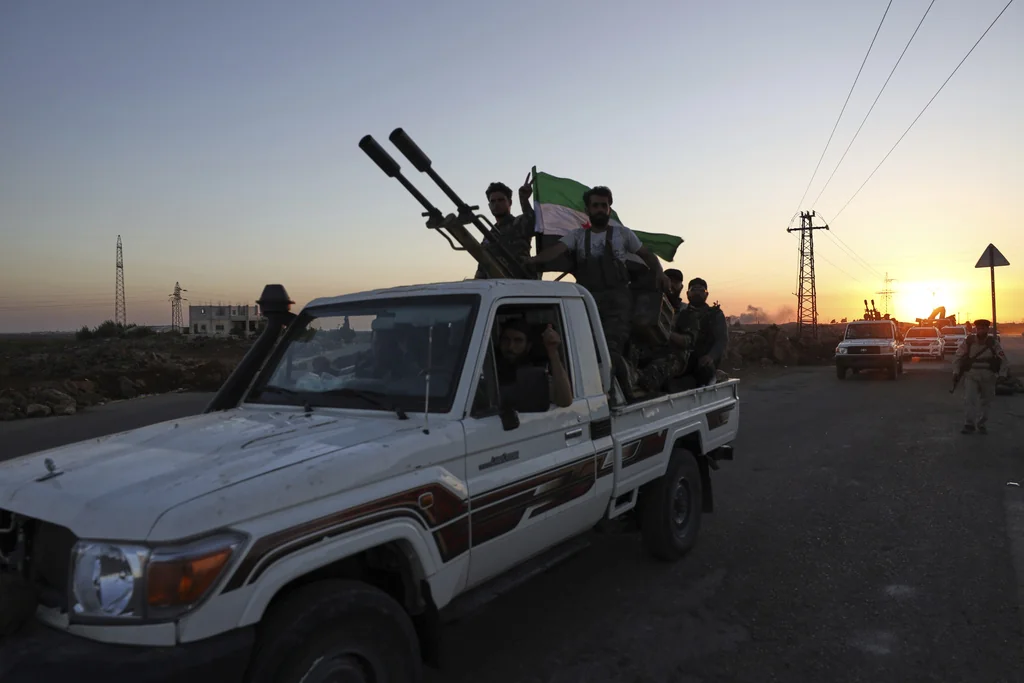
On Wednesday, Israeli Defense Minister Israel Katz said the IDF would continue military operations in southern Syria until President Ahmed al Sharaa withdraws his forces.
“The warnings in Damascus have ended – now painful blows will come,” he said. “The IDF will continue to operate forcefully in Suwayda to destroy the forces that attacked the Druze until their complete withdrawal.”
“Our Druze brothers in Israel, you can rely on the Israel Defense Forces to protect your brothers in Syria. Prime Minister Netanyahu and I, as Minister of Defense, have made a commitment – and we will uphold it,” Katz added.
Katz shared the video of the Syrian broadcaster being startled by the airstrike at the MoD HQ, with the caption, “The painful blows have begun.”
The Druze have a significant community in Israel, 150,000 out of 1 million globally, noted for their strong and close relationship with the Jewish state. Over half of the world’s Druze live in Syria, concentrated in the south. Jerusalem views the Druze in many ways as a model minority, taking the opposite approach of the Palestinians by choosing to cooperate and integrate itself with Israel.
While meeting with ultra-Orthodox soldiers on Tuesday, Israeli Prime Minister Benjamin Netanyahu said his country would take whatever measures necessary to ensure its security and the safety of the Druze.
“We have a commitment to preserve the southwestern region of Syria as a demilitarized area on Israel’s border,” he said. “We will not allow a return to the situation where a second Lebanon is being established there; we also have an obligation to safeguard the Druze locals.”
“We are doing that by carrying out intensive operations,” Netanyahu added. “I hope we won’t need further operations, and that very much depends on what is understood and done and what is not done in Damascus.”
Syrian government fighters have been known to record videos to post on social media, boasting of their atrocities, a pattern that continued this week. Videos showed government fighters beating bound Druze prisoners, shaving their mustaches as a sign of humiliation, and desecrating corpses. One video showed them running over the bodies of dead civilians with their vehicles. Other reports said government forces forced the Druze to walk on all fours and bark like dogs.
Reports and videos detailed government atrocities, including torture, looting, and executions.
The Druze were not the only minorities targeted by government forces — a caretaker of the Archangel Michael church, north of Suwayda, said the building was vandalized and torched by government forces.
Damascus acknowledged that its forces had committed atrocities in Suwayda in a statement, saying it “strongly condemns these heinous acts and affirms our full commitment to investigating all related incidents and punishing all those proven to be involved.”
Government forces entered Suwayda on Tuesday after negotiating a deal with some local Druze and Christian leaders to quell violence between Druze and pro-government Bedouins. Videos showed them in the center of the city. After reports of their atrocities spread, Hikmat al-Hijri’s Suwayda Military Council ambushed their forces with the help of Israeli airstrikes, driving them out of most of the city by the next day. Pro-government sources reported “dozens” of regime fighters were killed in Israeli airstrikes.
Suwayda has lost access to electricity amid the fighting. The Syrian Observatory for Human Rights reported on Wednesday that nearly 250 people had been killed, including 138 government troops and 71 people from Suwayda. At least 21 Druze civilians were confirmed to have been extrajudicially executed by government forces.
The true death toll is almost certainly much higher.
Thousands of Druze in Lebanon and Israel began protesting in solidarity with the Druze in southern Syria, with those in Israel demanding Jerusalem step in. Hundreds of Israeli Druze mobbed the Israeli-Syrian border, trying to cross over to assist their fellow Druze.
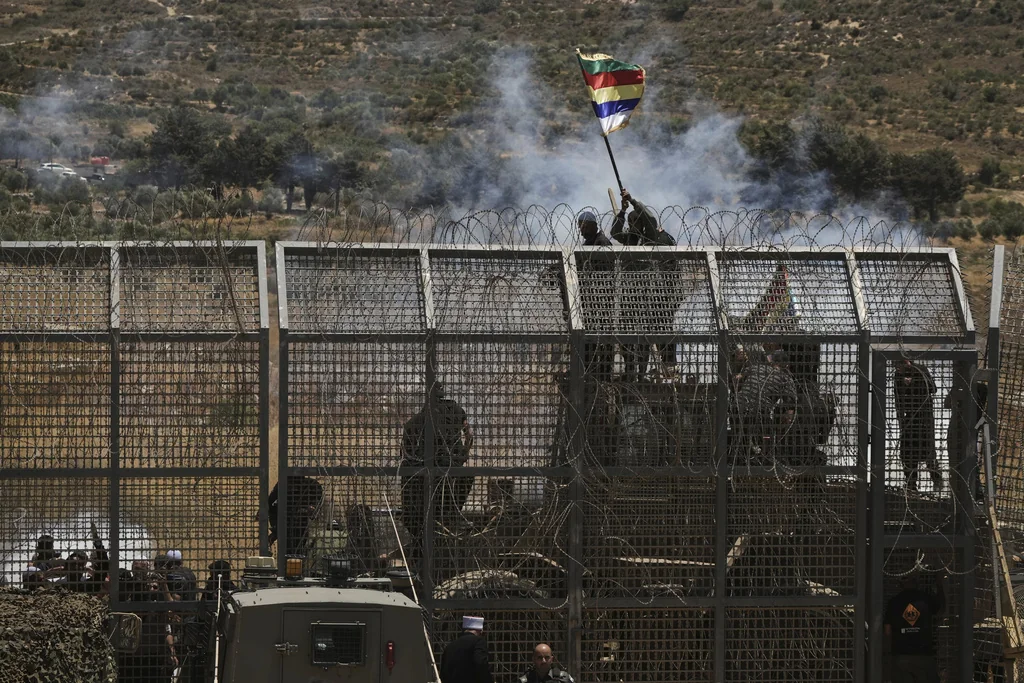
Footage showed scores of Druze crossing the border from Israel into Syria through a breach in a border fence, with IDF troops making only a half-hearted effort to stop them. Other videos showed the crowds loading into vehicles waiting for them within Syria to drive them deeper into the country.
Netanyahu pleaded with the Israeli Druze not to cross the border in a video address.
“The IDF is working, the Air Force is working, other forces are working. We are working to save our Druze brothers and to eliminate the regime’s gangs,” he said. “And now I have one request from you: You are citizens of Israel. Do not cross the border.”
“You are risking your lives; you can be murdered, you can be kidnapped and you are harming the efforts of the IDF. Therefore, I ask you – return to your homes, let the IDF operate,” Netanyahu added.
Israeli Foreign Minister Gideon Sa’ar condemned the lack of international outcry against regime abuses of the Druze.
“We are seeing a recurring phenomenon of persecution of minorities, to the point of massacres and pogroms. Sometimes it’s carried out by regime forces, sometimes by jihadist militias that are part of the regime’s base — and usually it’s both,” he said.
He also outlined Jerusalem’s interests in Syria.
“First, to maintain the status quo in southern Syria — near our border — and to prevent the development of threats to Israel in that region. Second, to prevent harm to the Druze community, with whom we have a strong and close bond through the Druze citizens of Israel.”
Hamas threw its lot in with Damascus, condemning “in the strongest terms the sinful Zionist aggression” against Syria.
SYRIA ANNOUNCES SHAKY CEASEFIRE AFTER OVER 160 KILLED IN SECTARIAN VIOLENCE THAT DREW IN ISRAEL
The fighting puts the U.S. in an awkward position, with President Donald Trump pursuing a path of normalization with the embattled Syria, lifting all sanctions against the country. Just days prior to the clash in the south, Tom Barrack, the U.S. special envoy for Syria, compared al-Sharaa to George Washington. He told the New York Times earlier this month that the U.S. was facilitating normalization talks between Syria and Israel, intending to have Damascus join the Abraham Accords.
The U.S. has remained mum on the conflict, saying in a statement that U.S. diplomats in Syria were “actively engaged with all parties in Syria to achieve calm and continue constructive discussions on ways to achieve integration.”




